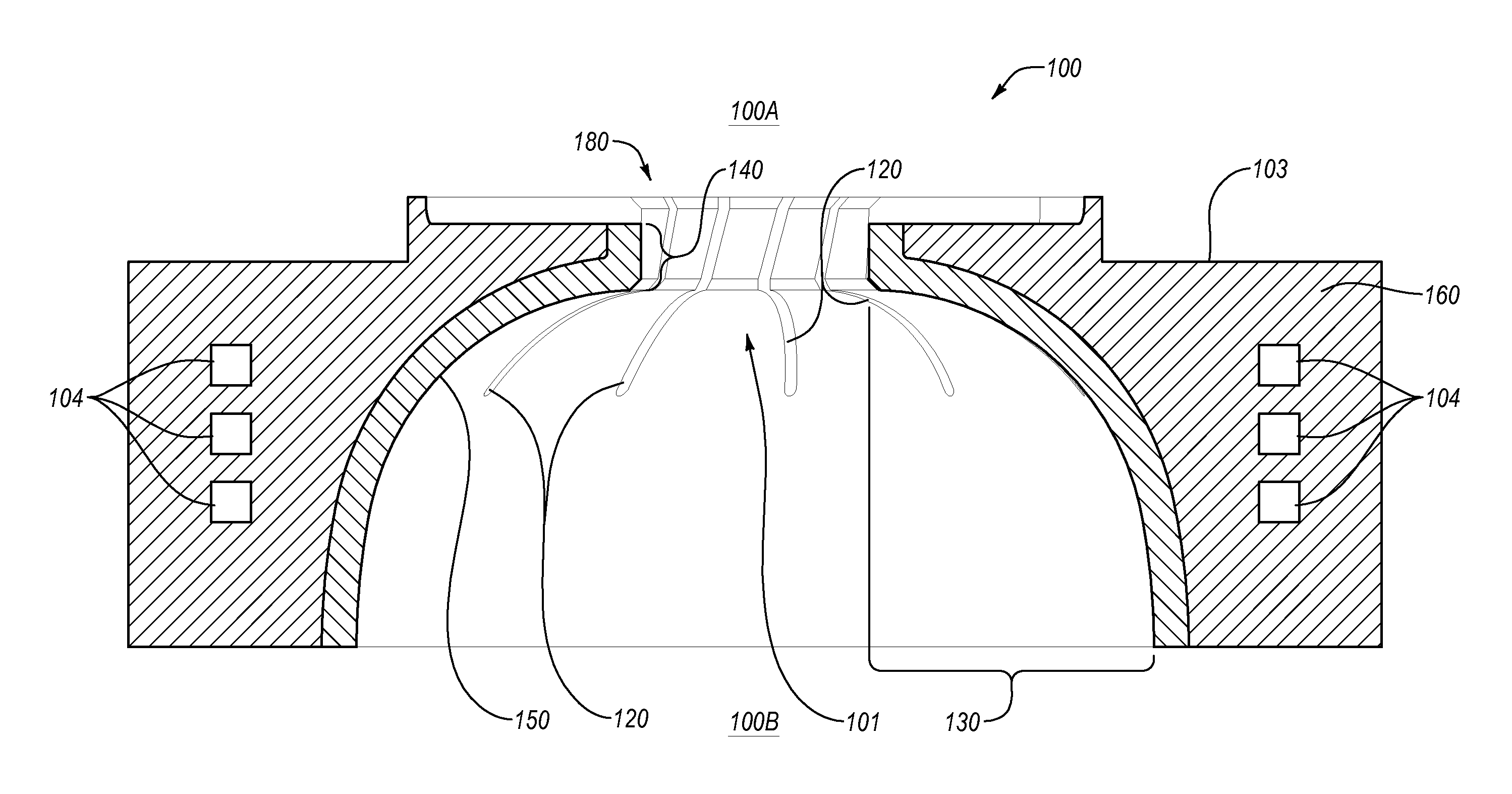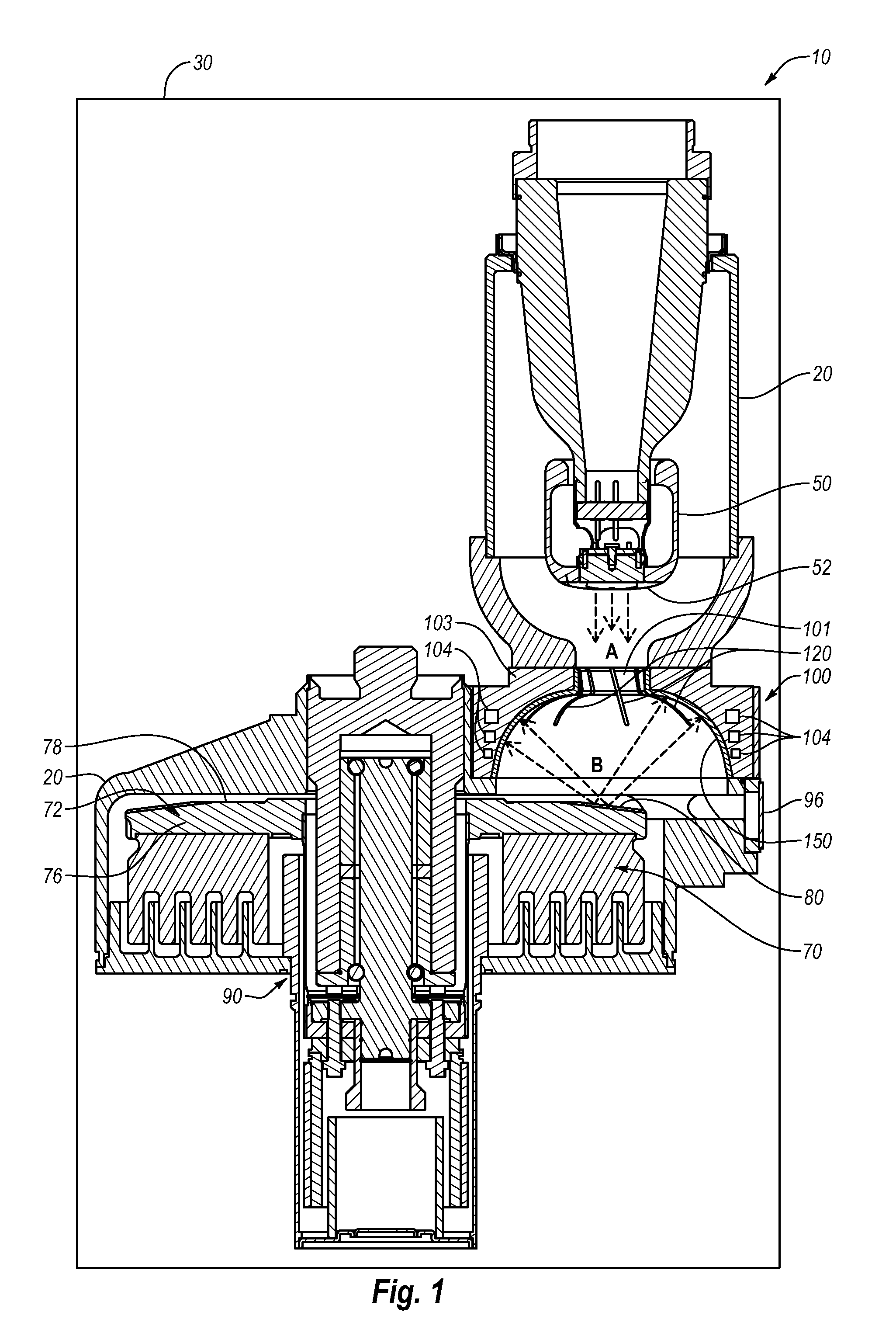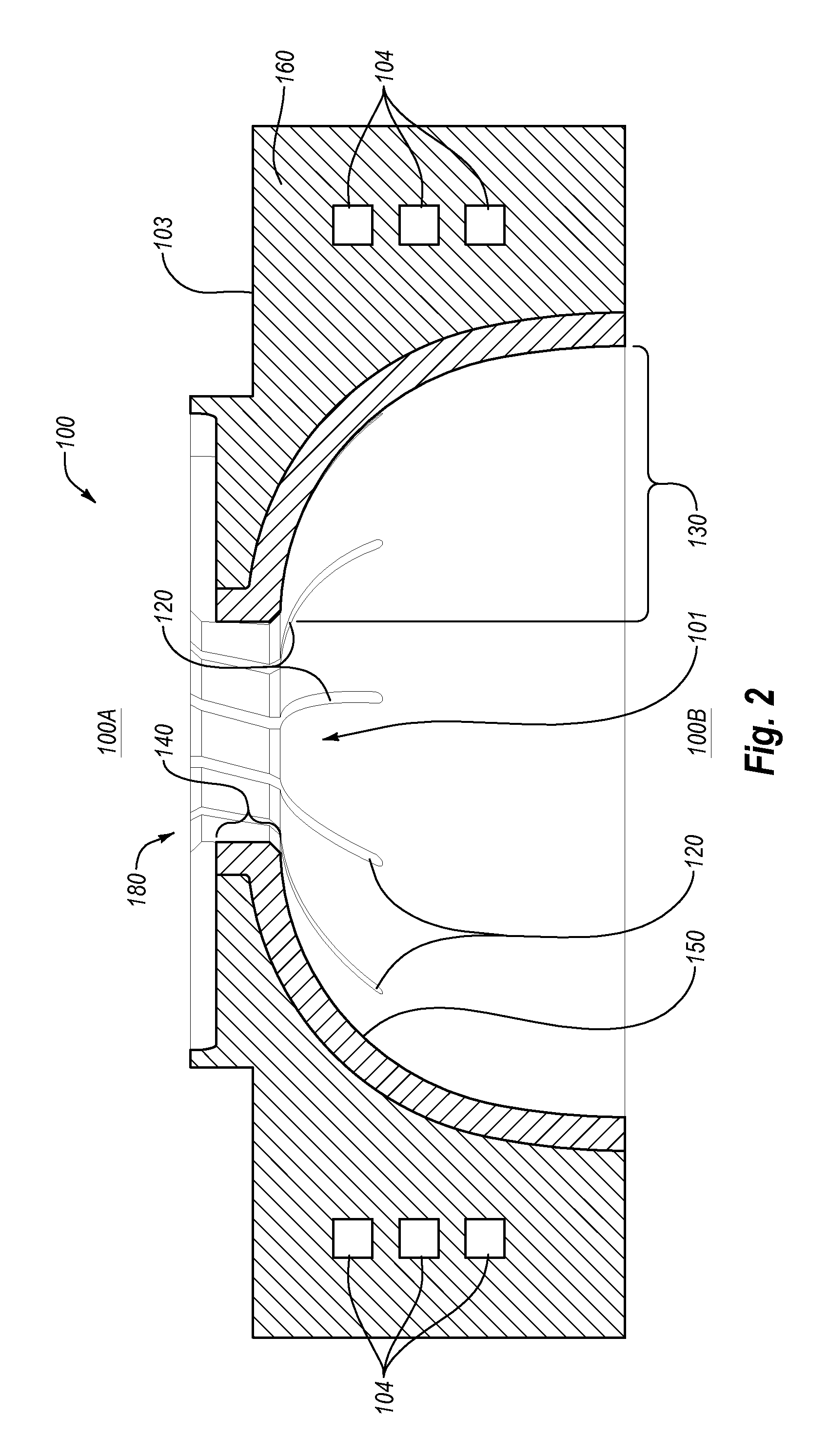X-ray tube aperture having expansion joints
a technology of expansion joints and x-ray tubes, applied in the direction of x-ray tubes, nuclear engineering, nuclear elements, etc., can solve problems such as thermal expansion and contraction, and achieve the effects of reducing thermal stress, reducing failures, and increasing the overall operating life of x-ray tubes
- Summary
- Abstract
- Description
- Claims
- Application Information
AI Technical Summary
Benefits of technology
Problems solved by technology
Method used
Image
Examples
Embodiment Construction
[0031]Reference will now be made to figures wherein like structures will be provided with like reference designations. It is understood that the drawings are diagrammatic and schematic representations of exemplary embodiments of the invention, and are not limiting of the present invention nor are they necessarily drawn to scale.
[0032]FIGS. 1-4 depict various features of example embodiments. In general, embodiments are generally directed to an electron shield for interposition between an electron emitter and an anode configured to receive the emitted electrons, such as in an x-ray tube. The primary function of the shield is to “collect” electrons backscattered from the anode. Advantageously, the electron shield is configured to withstand the elevated temperatures produced by backscattered electrons and incident on selected portions of the electron shield and resultant thermal stresses that occur. This in turn equates to a reduced incidence of failure in the electron shield and in the...
PUM
 Login to View More
Login to View More Abstract
Description
Claims
Application Information
 Login to View More
Login to View More - R&D
- Intellectual Property
- Life Sciences
- Materials
- Tech Scout
- Unparalleled Data Quality
- Higher Quality Content
- 60% Fewer Hallucinations
Browse by: Latest US Patents, China's latest patents, Technical Efficacy Thesaurus, Application Domain, Technology Topic, Popular Technical Reports.
© 2025 PatSnap. All rights reserved.Legal|Privacy policy|Modern Slavery Act Transparency Statement|Sitemap|About US| Contact US: help@patsnap.com



